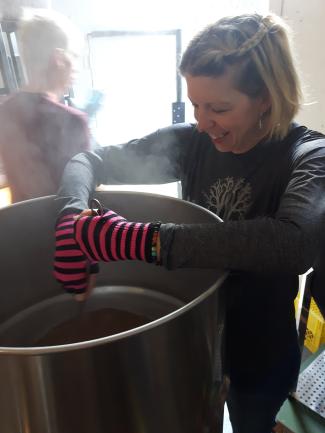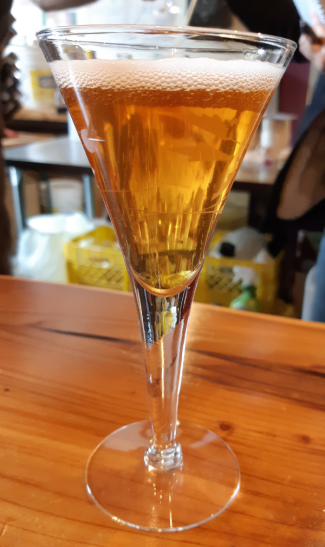When most people think about archaeology, they go straight to khaki-clad adventurers, empty streets of ruined cities, or booby-trapped tombs filled with untold riches. It is rare for someone’s first (or even second) thought to take them to beer. Yet what archaeology does is study the past, not as we want it to exist in movies or museums, but as it was lived.

That means crafting our interpretations to fill the streets of the stone-built city with the people, animals, smells and sounds of their daily lives. It means recognizing that the khaki-clad adventurer is more of a looter than an archaeologist, and that we need to focus on the things important to people of the past, including beer.
Beer has been brewed for thousands of years, predating those same cities, tombs, the wheel and even writing. Brewing beer might well even predate the origins of farming, with debates continuing over whether baking bread or brewing beer was the driving force for agriculture. The answer is likely both. Beer and bread are grain-based, result from fermentation, and in the past required similar tools to create. Whichever came first, both were integral to ancient life and archaeology is incomplete without discussing beer and its importance to their social lives.
The lasting impacts of Prohibition
Before we can explore beer archaeology, we must be aware of our own cultural biases, largely resulting from our Prohibition-era heritage. Both Canada and the USA were affected in profound ways by the Temperance Movement and Prohibition legislation. Ask anyone working in hospitality and you will likely get an earful about the legal hoops (often crafted during Prohibition) for serving alcohol. This baggage can also be seen in our instant association of alcohol with substance abuse, as well as our umbrella term “alcohol” used to refer to beer, cider, wine and hard spirits. Before Prohibition this was not the case.
Beer in the ancient past
The beer that we drink today is not the same as its ancient origins. Whether you are purchasing beer from a local craft brewer or homebrewing your own, there are stringent guidelines for sterilization, storage and serving beer. Archaeological evidence points to a very different experience in the past. The earliest beers were, in fact, brewed in the household by women for their families. This beer was brewed, fermented and drunk all from the same vessel. It would have had a shelf life of about a week, and the brewing flotsam would float to the surface along with numerous flies that dive-bombed the brew. To avoid swallowing the floating botanicals and insects, people drank the beer through long straws made out of … straw.
These early beers also had a low alcohol content of around 2% (modern beers are 4-6%), which would have killed off much of the harmful bacteria present in the water. This means that ancient beer was likely a cleaner drinking source than water, and supplied a much-needed source of calories to support their daily activities. We do not know the age when people in the past began drinking beer, but it was likely much younger than our own legal ages, which were not established until the repeal of Prohibition (surprise!).
Ancient-inspired ales

All of this brings us to the Raise Your Glass to the Past research project. Along with my research partner, Dave Paul, Owner/Brewer of LoveShack Libations brewery in Qualicum Beach, BC, we brew ancient-inspired ales based on the archaeological evidence compiled by myself and my students. Our beers are based on archaeology, but brewed with modern techniques. We do not use ceramic vessels, no flies dive-bomb our fermented beer, and they are not served with straws. They are designed to inspire people to make meaningful connections with the past, while also being delicious. Any beer you drink has an ancient heritage, but our beers reference these origins deeply in ways you have likely never tasted before. We pair these ancient-inspired ales with information about the archaeology that led to their brewing.
Raise Your Glass to the Past allows me to work with VIU Anthropology students in experimental archaeology. This includes research projects (individual-based and in the Anthropology Honours Program), training in experimental archaeology, co-authoring posters for archaeological conferences, and more. VIU students can also register for my Anthropology of Alcohol and Eating Antiquity classes to learn more.
Finally, you can also check out my paper, The Movement of Women, Beer and Feast Foods in Establishing the Inka Empire.
In closing, the next time you raise your glass to toast life, perhaps you can also toast the people who first invented your chosen libation, and to whom we owe a millennia of gratitude.
